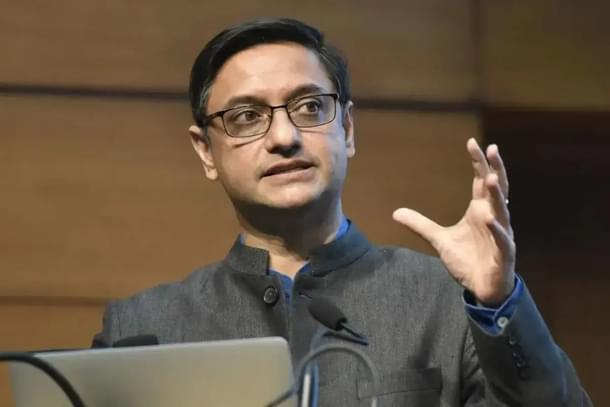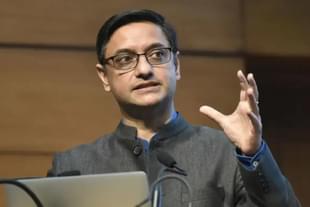Ideas
'A Deep-Rooted Inferiority Complex Among India's Old Elite Driving Opposition To New Parliament': Sanjeev Sanyal
Swarajya Staff
May 29, 2023, 10:50 AM | Updated 03:27 PM IST
Save & read from anywhere!
Bookmark stories for easy access on any device or the Swarajya app.


In an article published in The Times of India, Sanjeev Sanyal, a member of the Economic Advisory Council of the Prime Minister, discusses the significance of the new Parliament building. Sanyal highlights the practical reasons behind the need for a new structure, including the limitations of the old colonial-era building and the inadequacy of its seating capacity, and argues that opposition to the new building stems from an inferiority complex among a section of India's old elite.
Sanyal begins by stating that the inauguration of the new Parliament building is a source of great pride for a resurgent, 21st century India. He highlights the practical reasons necessitating a new structure, including the limitations of the old colonial-era building, which was not designed to serve as the national legislature for a population of 1.4 billion people.
The author emphasizes that the old building is aging and experiencing serious structural issues, such as problems with air-conditioning, electricals, office space, and earthquake proofing.
Sanyal argues that the seating capacity of the Lok Sabha and Rajya Sabha in the old Parliament building is insufficient to accommodate the current membership and points out that the lack of space also prevents future expansion to accommodate additional members following the delimitation exercise of 2026.
Sanyal emphasizes that the need for a new Parliament building was not solely proposed by the current government but had been acknowledged by leaders across the political spectrum. He refers to a formal letter from the office of the former Speaker of Lok Sabha, Meira Kumar, in July 2012, where she expressed approval and the need for a new Parliament building. This dispels the notion that the idea of a new building was abruptly brought up by the current leadership in 2014.
The author suggests that opposition to the new Parliament building stems from a deep-rooted inferiority complex within a segment of India's old elite. He argues that those who oppose the new Parliament also oppose other modernization projects such as the Central Vista project, the installation of the Netaji statue, upgraded government offices, and the introduction of high-speed trains.
According to Sanyal, this resistance implies that modern India should avoid any endeavor that might disrupt the legacy of colonial-era architects like Edwin Lutyens and Herbert Baker.
Sanyal points out that post-Independence India has not constructed many iconic public buildings, except for a few like the Vidhana Soudha in Bengaluru. He questions the continued reverence for colonial-era or pre-colonial structures such as the Taj Mahal in Agra, Victoria Memorial in Kolkata, or Victoria Terminus (now Chhatrapati Shivaji Terminus) in Mumbai. He argues that it is time for India to break free from this mindset and embrace a new era of architectural symbolism.
The new Parliament building, in Sanyal's view, signifies a departure from this mindset. He describes it as a grand edifice that seamlessly blends modern functionality with a sense of civilizational continuity. The new building provides comfortable seating and the latest digital support for MPs, while also showcasing the best of India through beautifully carved guardian statues and curated artwork.
Drawing a contrast with older post-Independence public architecture, he highlights the poor conditions of buildings like Krishi Bhawan or Shastri Bhawan, located near the new Parliament. He emphasizes that such dilapidated infrastructure is unsuitable for effective policy-making and further supports the need for upgrading the machinery of governance.
"Therefore, the new Parliament must be seen as part of a wider effort to upgrade the machinery of governance. The newly completed Vanijya Bhawan, which houses the commerce and industry ministry, is an example of the new generation of government offices. They reflect the aspirations of an emerging, confident India," Sanyal writes.
He also addresses concerns about the cost of the new buildings, asserting that the estimated cost of the new Parliament is approximately Rs 900 crore, excluding the expenses related to artwork and furnishings. Sanyal argues that for an institution of such importance, expected to be used for centuries, the cost is not extravagant, especially for the world's fifth-largest economy.
The author concludes by critiquing the opposition's irrational petulance towards Sengol, the golden sceptre used in 1947 to symbolize the transfer of power from the British crown to the people of India. Sanyal praises the decision to restore Sengol to its rightful place in the Lok Sabha chamber, as it signifies a confident and continuity-conscious 21st century India.





